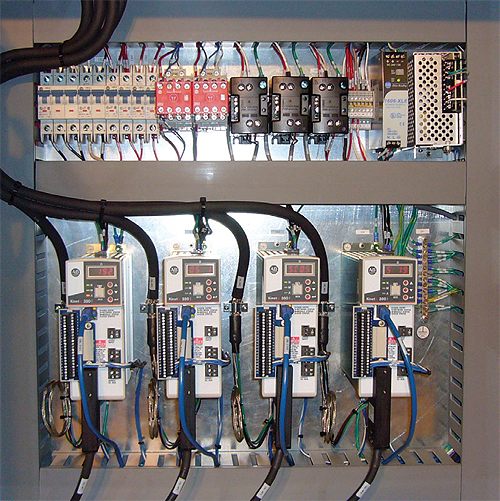Microbore tubing is an essential tool in modern medicine. Tiny in diameter, it’s also flexible and durable – qualities that make it indispensable for treating, repairing and even replacing parts of the human body.
Manufacturers produce microbore tubing in a range of sizes for different medical purposes. Whatever the size, microbore tubing requires a rigorously precise and consistent production process. One particularly delicate step occurs at the end, when long sections of newly extruded tubing are wound around spools. By carefully aligning layers around a hard core – just as thread is wound on a sewing spool – manufacturers maintain the tubing’s proper shape until it is unwound to make medical products.
Tension is a major quality control issue in the spooling process. If the tubing is too taut, the plastic can stretch; if it’s too loose, it can warp. Either effect can ruin the product.
To obtain the optimal tension control, one of the world’s largest medical-device companies tapped CKC Engineering (San Francisco) to design and develop a custom microbore tubing spooler machine for a new extrusion plant. The application required multi-axis coordinated motion, and closed-loop control of the tubing tension by a proportional-integral-derivative (PID) feedback mechanism.
“The main goal was to create a system that would operate at an extremely low tension set point, while automatically handling tubing coming in at varying speeds and tensions,” said Carl DiPietro, vice president and controls engineering manager at CKC Engineering. “A complicating factor was that the client also wanted two spools in the system, so that the tubing could be quickly switched to an empty spool on the fly.”
Versatility was another requirement. The machine needed to handle more than 100 extrusions and their specific recipe parameters. It also needed to fit and accurately fill different-sized spools. All these capabilities needed to come in a machine approximately the size of a small refrigerator. That way, operators could move the spooler between extrusion lines and out of the way when they were not using it.
DiPietro and his colleagues heard about two new offerings from Rockwell Automation, and thought the products might provide the ideal combination for their client. CKC’s managers contacted their Rockwell Automation distributor, Buckles-Smith in California. CKC wanted to hear about the combined capabilities of the Kinetix 350 servo drive with the Allen Bradley CompactLogix™ 5370 controller.
The consultation convinced CKC to choose the CompactLogix 5370 controller, along with three Kinetix 350 EtherNet/IP™ servo drives as the control platform for the new tubing spooler machine. “By coupling the Logix controller with the Kinetix 350 drives, we got the high-performance, integrated-motion package we needed in a small footprint,” said DiPietro. “The new products using EtherNet/IP also offer a significant cost savings over the SERCOS platform, which previously was our preferred platform for coordinated motion.”

The machine operates through closed-loop tension control using a high-accuracy tension sensor to ensure the tubing is not stretched or flattened during the spooling process. A traverse axis is electronically geared to the operating spool, such that it travels at the correct speed to smoothly lay the tubing, even as the spool speeds up and slows down to maintain the optimal tension. Optical sensors enable the traverse system to detect the edge of the spool and reverse direction – allowing multiple spool sizes to be used interchangeably.
CKC’s design met all of the client’s needs. The new custom-built tubing spooler accommodates over 100 different extrusions, and enhances the quality and repeatability of the process by accurately controlling the tension. DiPietro believes the new Rockwell Automation products decreased programming and commissioning time by 25%. In addition, the component cost was reduced by 25% compared to the SERCOS platform.
Rockwell Automation
www.rockwellautomation.com
Filed Under: Factory automation, Medical-device manufacture, Drives (servo) + amplifiers, Motion control • motor controls





Tell Us What You Think!